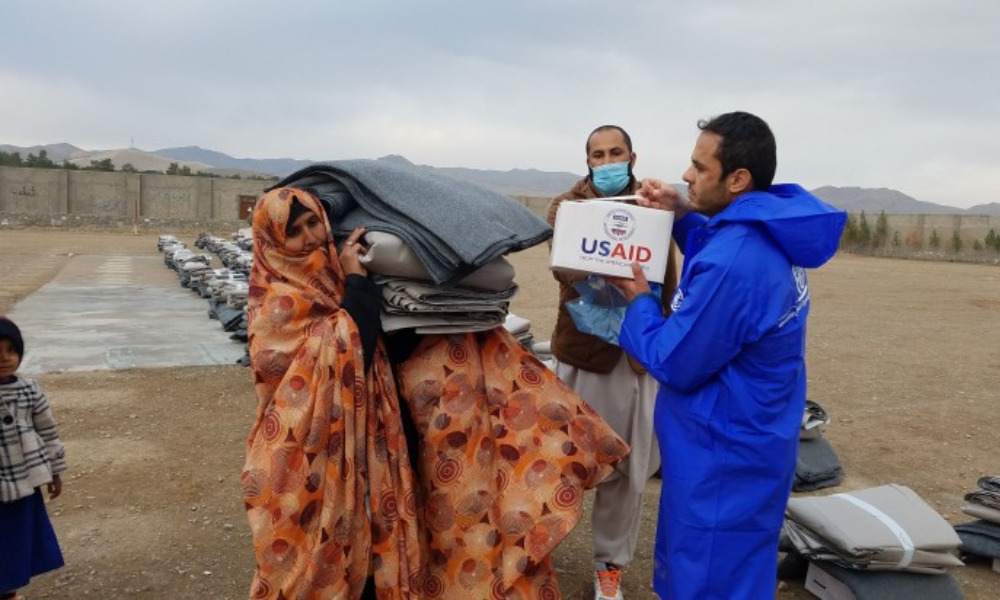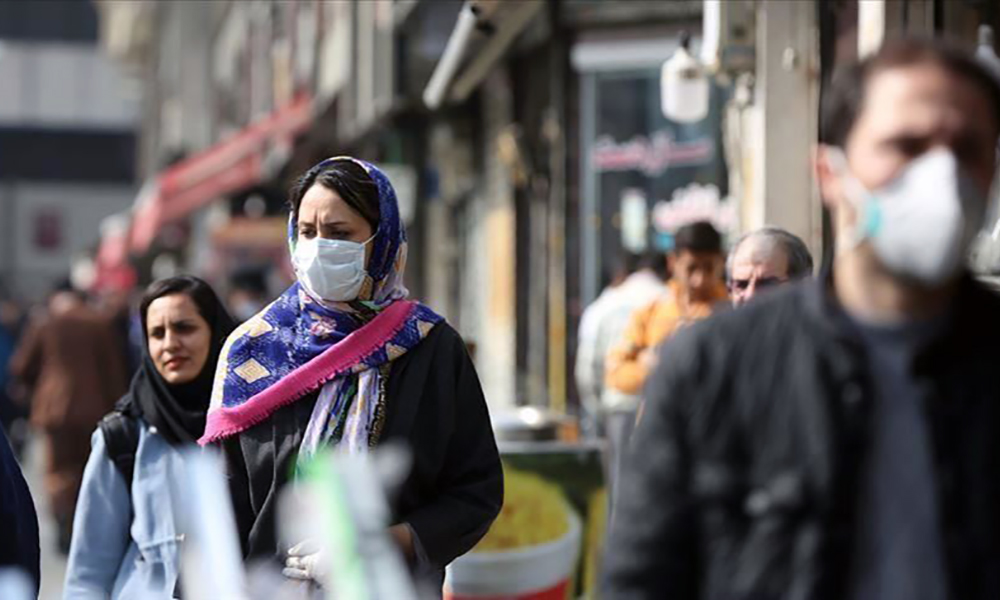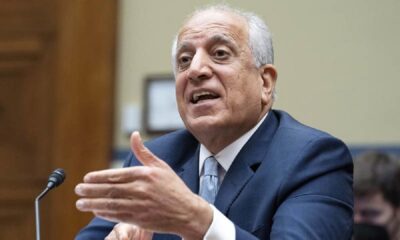COVID-19
US provides more than $36.7 million for COVID-19 response – Afghanistan

The United States has allocated more than $36.7 million to help the people of Afghanistan address the COVID-19 pandemic, and expedited $90 million in continued development assistance through the World Bank to support Afghanistan’s national health and education sectors and local government needs.
“The entirety of this U.S. funding comes at a critical moment when Afghanistan is dealing with the effects of COVID-19. We must all work quickly to prevent the further spread of COVID-19; attend to the sick; put people back to work; and protect vulnerable women and children, who can become victims of rising domestic violence in these kinds of situations,” said Ambassador Ross Wilson, Charge D’Affaires at the U.S. Embassy in Kabul.
The United States is delivering on its commitment to the #EnduringPartnership with #Afghanistan. The United States announced more than $36.7 million to respond to #COVID19. #AmericaActs @USEmbassyKabul @USAIDAfghan https://t.co/pRPknFSvLv
— U.S. Embassy Kabul (@USEmbassyKabul) July 23, 2020
The U.S. government is coordinating with the Afghan government, international humanitarian partners, the donor community, the private sector, and the Afghan people to support a robust response to this pandemic. This funding builds on resources previously announced by Secretary of State Pompeo for COVID-19 response in Afghanistan, through the following efforts:
- $36.7 million in COVID-19 assistance includes:
- more than $19.1 million for health and international disaster assistance to support the detection and treatment of COVID-19, as well as protection and health support, for internally displaced persons;
- nearly $3.1 million in migrant and refugee assistance for Afghan returnees;
- $500,000 to procure COVID-19 prevention and control supplies for correctional facilities; and
- $14 million in existing economic support funds to support the Afghan government’s nationwide response to COVID-19.
- $90 million in existing support through the World Bank for continued health and education services during the pandemic; to enable citizen-led Community Development Councils to meet sanitation and infrastructure needs; and to support the health sector in maintaining emergency services and strengthening disease surveillance, testing, and treatment.
This assistance continues America’s enduring partnership with Afghanistan and its people. The United States has provided decades of life-saving U.S. government investments in Afghanistan’s health sector. USAID has made quality basic health care services accessible to millions across the country, especially for women and children; created the country’s Disease Early Warning System; and strengthened Afghanistan’s nationwide public health management information system. USAID also has supported water, sanitation, and hygiene programs to help keep millions of Afghans healthy and stave off disease during disasters.
With almost $19 billion spent on development programs since 2002, USAID provides the largest bilateral civilian assistance program to Afghanistan. USAID support has enabled the Ministry of Public Health to make critical strides in providing quality basic health care services to Afghans across the country, especially women and children. USAID also supports the collection of information on a weekly basis on 15 communicable diseases to provide accurate and timely data on the outbreak of disease and seasonal trends to fight outbreaks.
COVID-19
WHO declares end to COVID global health emergency

The World Health Organization said Friday that COVID-19 no longer qualifies as a global emergency, marking a symbolic end to the devastating coronavirus pandemic that triggered once-unthinkable lockdowns, upended economies and killed millions of people worldwide.
The announcement, made more than three years after WHO declared the coronavirus an international crisis, offers some relief, if not an ending, to a pandemic that stirred fear and suspicion, hand-wringing and finger-pointing across the globe, AP reported.
The U.N. health agency’s officials said that even though the emergency phase was over, the pandemic hasn’t finished, noting recent spikes in cases in Southeast Asia and the Middle East.
WHO says thousands of people are still dying from the virus every week, and millions of others are suffering from debilitating, long-term effects.
“It’s with great hope that I declare COVID-19 over as a global health emergency,” WHO Director-General Tedros Adhanom Ghebreyesus said.
“That does not mean COVID-19 is over as a global health threat,” he said, warning that new variants could yet emerge. Tedros noted that while the official COVID-19 death toll was 7 million, the real figure was estimated to be at least 20 million.
Tedros said the pandemic had been on a downward trend for more than a year, acknowledging that most countries have already returned to life before COVID-19.
He bemoaned the damage that COVID-19 had done to the global community, saying the pandemic had shattered businesses, exacerbated political divisions, led to the spread of misinformation and plunged millions into poverty.
When the U.N. health agency first declared the coronavirus to be an international crisis on Jan. 30, 2020, it hadn’t yet been named COVID-19 and there were no major outbreaks beyond China.
More than three years later, the virus has caused an estimated 764 million cases globally and about 5 billion people have received at least one dose of vaccine.
In the U.S., the public health emergency declaration made regarding COVID-19 is set to expire on May 11, when wide-ranging measures to support the pandemic response, including vaccine mandates, will end. Many other countries, including Germany, France and Britain, dropped most of their provisions against the pandemic last year.
When Tedros declared COVID-19 to be an emergency in 2020, he said his greatest fear was the virus’ potential to spread in countries with weak health systems.
Most recently, WHO has struggled to investigate the origins of the coronavirus, a challenging scientific endeavor that has also become politically fraught.
COVID-19
COVID-19 in Iran: Nearly 900 new cases, 24 deaths recorded

The Iranian health ministry announced on Sunday that more than 890 new cases of COVID-19 have been identified across the country during the past 24 hours, adding that 24 patients have died in the same period of time, Fars News Agency reported.
"A sum of 891 new patients infected with COVID-19 have been identified in the country based on confirmed diagnosis criteria during the past 24 hours," the Iranian Health Ministry's Public Relations Center said on Sunday, adding, "454 patients have been hospitalized during the same time span."
The ministry’s public relations center said 611 people infected with COVID-19 are in critical condition.
COVID-19
China says 200 million treated, pandemic ‘decisively’ beaten

China says more than 200 million of its citizens have been diagnosed and treated for COVID-19 since it lifted strict containment measures beginning in November.
With 800,000 of the most critically ill patients having recovered, China has “decisively beaten” the pandemic, according to notes from a meeting of the ruling Communist Party’s all-powerful Politburo Standing Committee presided over by President and party leader Xi Jinping, AP reported.
China enforced some of the world’s most draconian lockdowns, quarantines and travel restrictions and still faces questions about the origins of the virus that was first detected in the central Chinese city of Wuhan in late 2019. Heavy-handed enforcement prompted rare anti-government protests and took a heavy toll on the world’s second-largest economy.
The official Xinhua News Agency quoted Xi as saying that policies to control the outbreak had been “entirely correct.” The abrupt lifting in November and December of the “zero COVID” policy that had sought to eliminate all cases of the virus led to a surge in infections that temporarily overwhelmed hospitals.
Case numbers have since peaked and life has largely returned to normal, although international travel in and out of China has yet to return to pre-pandemic levels.
China is now transitioning to a post-pandemic stage after a fight against the outbreak that was “extraordinary in the extreme,” Xinhua said.
The government will continue to “optimize and adjust prevention and control policies and measures according to the times and situations with a strong historical responsibility and strong strategic determination,” Xinhua said.
-

 World4 days ago
World4 days agoBiden is sending aid to help Ukraine keep fighting next year, Blinken says
-

 Tahawol4 days ago
Tahawol4 days agoTahawol: NATO’s concern over proximity of Russia & North Korea discussed
-

 Latest News4 days ago
Latest News4 days agoIEA committed to freedom of media within Islamic principles: Mujahid
-

 Latest News4 days ago
Latest News4 days agoIEA prioritizing poverty reduction and job opportunities, says deputy PM
-

 4 days ago
4 days agoAWCC customer in Kandahar wins 1 million AFN in ‘lucky lottery’
-

 Latest News4 days ago
Latest News4 days agoIEA cuts mobile phone and internet rates
-

 Latest News4 days ago
Latest News4 days agoKhalilzad: Turning our back on Afghanistan would not be wise
-

 World5 days ago
World5 days agoChina’s largest air show off to flying start with fighter jets and attack drones
























